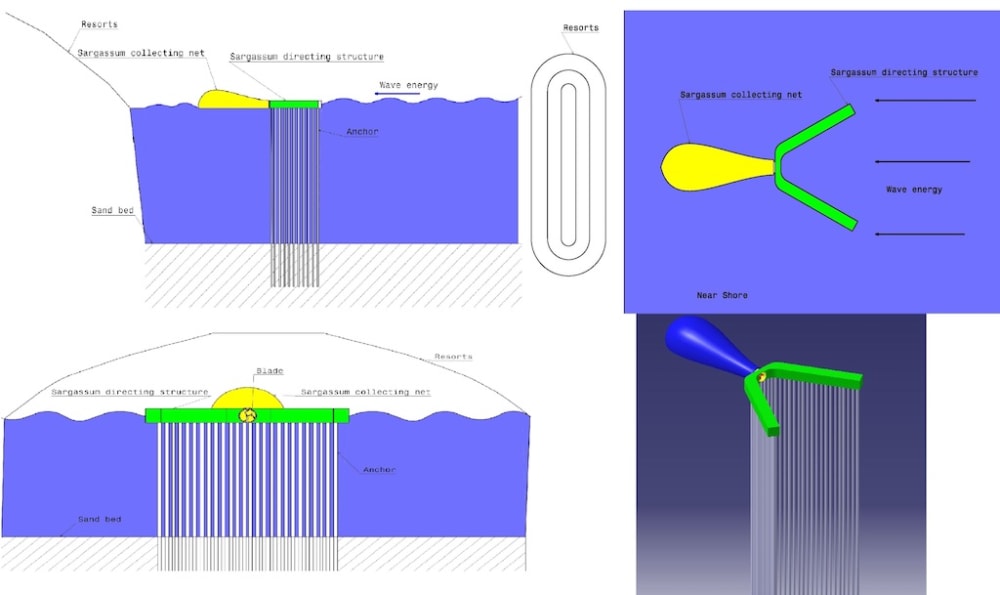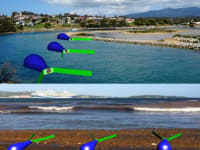Record-breaking amount of Sargassum is in the Caribbean resulting in the largest problem ever. The major problem it has brought are it piles up on beaches, sometimes many feet thick and begins to decay. The hydrogen sulphide that gets released smells like rotting eggs and many resorts had to close their doors. Since the species are Sargassum natans and Sargassum fluitans float they block sunlight creating a dead zone beneath them because plants under need sunlight to survive and the clean-up and removal of sargassum is an expensive task. This project proposes a new way to solve this problem. The best solution is a long term solution but the Caribbean economy depends upon tourism so it needs a quick solution other than cleaning up the algae on normal or standard method.
Since the basic problem is that the algae float, pile up and decay, we will give it no time to pile and decay by using a device seen above. Since the algae have considerable volume and we have the advantage of the current, we use the green structure to direct Sargassum into the red blade. The green structure is stationary fixed with the ground depending on the direction of the current of the shore. Then the blade will force the Sargassum to be collected in the holding storage made up of a flexible hard net that can pass the water but not the algae. The storage will prevent the Sargassum from decaying. Then regularly we change the holding net.
The main concern of this product is how the blade is powered and the shear force of the wave. We have two options, solar rechargeable batteries or as I said above we have the advantage of the current. The current can be a source of mechanical power. We can use this mechanical power to run the blade without using any additional power. But if the current is not strong enough using a rechargeable battery is feasible. The design will be modified after on site inspection. The solution to withstand the shear force is using a special anchor technology which is frequently used by many parts of the world in beach structures. This mechanism is known in its low cost and high strength mechanism especially for sandy shores. The number of anchors, the thickness of the anchor and other relevant factors will depend on the wave energy of the beach. As seen in the picture above there is space that is between the devices for the aquatic animals to pass through. Since the suction is heavy only near the blade live aquatic animals will not be sucked in. My calculations gave me if we clean/ sort 35,000 gallons(US) in 8 hours we need a minimum flow rate of 73 gallons (US) per minute turbine for 20-inch intake line. Since there are multiple devices installed in the Caribbean beach it is enough to get the job done.
For more information please visit https://conservationx.com/project/id/372/caribbeanssargassumproblem or https://www.herox.com/plastika-reparabilis/round/346/entry/21723
Like this entry?
-
About the Entrant
- Name:Anteneh Gashaw
- Type of entry:individual
- Patent status:none








